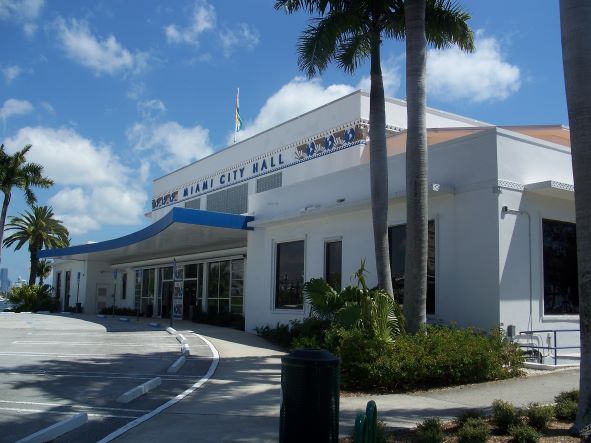U.S. Supreme Court shoots down ‘racial gerrymandering’ challenge to Miami district map
An effort to replace Miami’s district map with another has hit a wall, and the current map will remain through the city’s election this year.
The U.S. Supreme Court denied an appeal by local community groups — including Engage Miami, GRACE and two NAACP chapters — of a lower court’s ruling earlier this month that allowed the map to stay.
The Supreme Court’s decision to forgo hearing the appeal, first reported Thursday by Joey Flechas of the Miami Herald, solidifies district lines the Miami Commission approved in June that will be used for the city’s election Nov. 7. Seats representing districts 1, 2 and 4 are up for grabs.
It also represents a major loss for the community groups and residents who sued the city and fought an uphill battle for the past nine months, enjoying early victories before suffering defeats as the case progressed through the appeals process.
In May, U.S. District Judge K. Michael Moore ordered Miami to redraw its district boundaries. He said the current map was designed with an unconstitutional “racial target,” concurring with a federal magistrate judge that the city used “racial quotas” to ensure diversity on the Commission.
The U.S. District Court of Appeals for the 11th Circuit reversed Moore’s decision in a split 2-1 decision Aug. 4, but not on the basis of merit. Instead, Judges Elizabeth Branch and Robert Luck — both Donald Trump nominees to federal court — said the plaintiffs waited too long to sue and that courts should abstain from interfering with election law close to an election. Luck also served on the state Supreme Court, appointed by Gov. Ron DeSantis.
The dissenting judge, Bill Clinton nominee Charles Wilson, noted that the reason the case had come so close to the Miami election this year was because of the city’s delay in filing an appeal. As Joshua Ceballos of WLRN reported, Miami previously appealed Moore’s decision but then rescinded the appeal after Commissioners approved a new map June 14.
In arguing the case, lawyers from the ACLU cited public meetings last year at which Commissioners focused on drawing a map that maintains the city governing body’s racial composition, which tends to include three Hispanic members, one Black member and a non-Hispanic White member.
That included Commissioner Alex Díaz de la Portilla asserting during a meeting March 11, 2022, that the goal was “to have an African American district, for lack of a better term, a White district, which is the coastal district, and three Hispanic districts.”
At the same meeting, Commissioner Manolo Reyes said, “The only race that we’re going to bring into this equation … is we have to keep diversity on this dais, and that’s why we have districts.” He then added, “If not … let’s do away with the districts, then … we will have five Hispanics right here, since we are 70% of the population.”
The City Commission approved the map later that month despite concerns from residents that some of its changes weakened the vote of Black residents in Coconut Grove. Then two months ago, Commissioners replaced the map with a new one they said complies with the Fourteenth Amendment’s guarantee that citizens enjoy equal protection under the law.
The community groups disagreed, and they’ll have another chance to prove it. Because the appeals court’s decision did not speak to whether the city’s map includes racial gerrymanders, it is expected the lawsuit will go to a jury trial next year.
Post Views: 0



